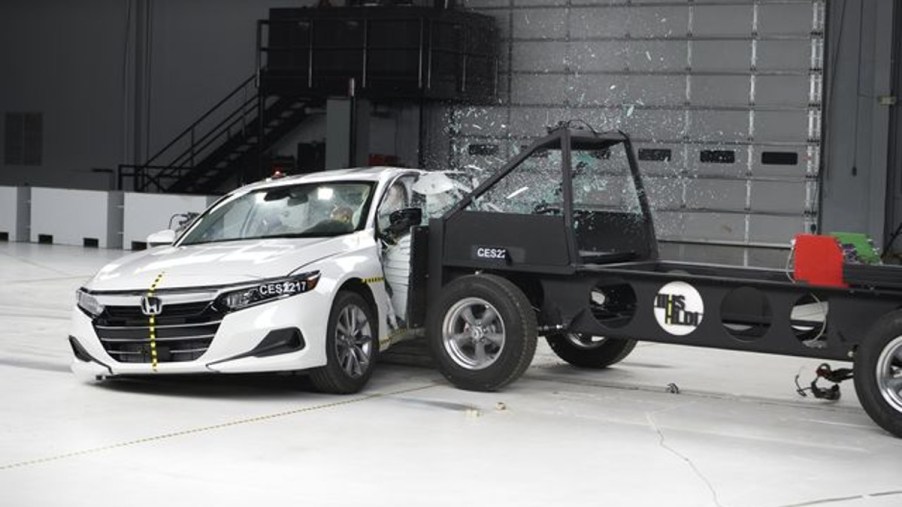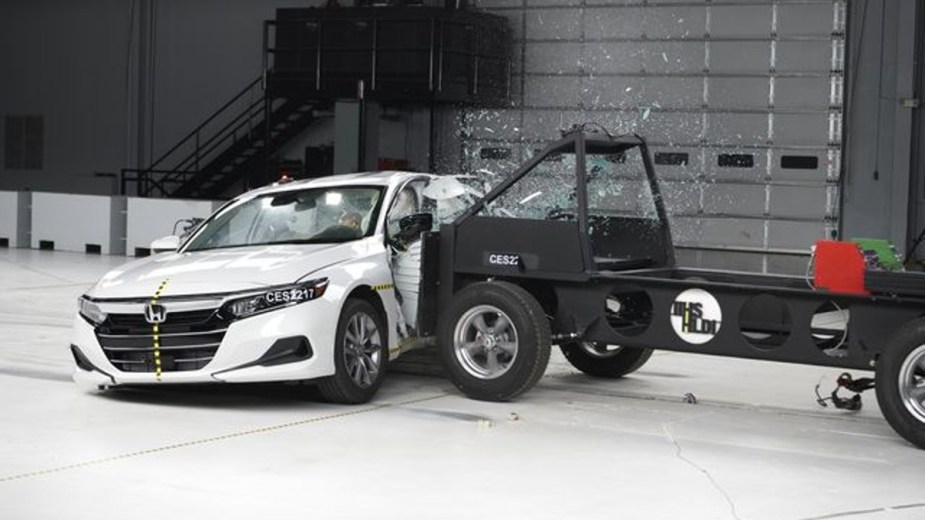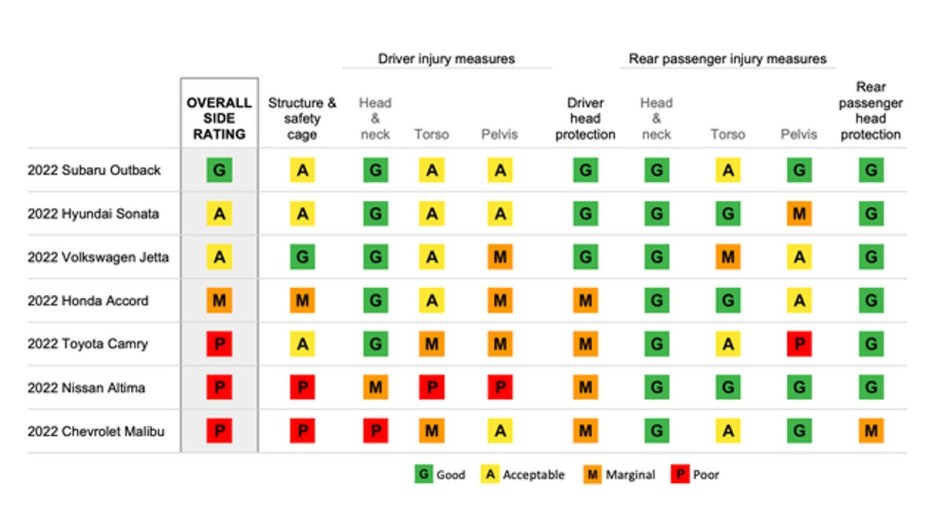
IIHS Side-Impact Test Data: Are Traditional Cars Actually in Danger of Going Extinct?
The proliferation of SUVs in the current auto market caused the Insurance Institute for Highway Safety (IIHS) to change its side-impact crash test. This change could challenge the need for traditional sedans and coupes on the roads.
How have SUVs changed the nature of safety for the IIHS?
In the United States, more SUVs are driven than any other vehicle class. Yes, SUV is a general term for vehicles from the small size of the Hyundai Kona to the Chevrolet Suburban, but that’s the nature of the market.
SUVs typically have a higher center of gravity, which creates a higher impact point when crashing into a smaller vehicle such as a sedan or coupe. This has created a change in testing for the IIHS.
What are the testing changes?

As reported by Road and Track, previous IIHS side-impact tests used a 3300-pound vehicle traveling at 31 mph. The test now uses a 4200-pound vehicle traveling at 37 mph. This change represents the larger number of heavier vehicles on the roads today. The IIHS implemented the necessary changes in these tests to reflect our movement toward SUVs.
In addition to using a heavier vehicle traveling a little faster, the IIHS changed the impact point to reflect what happens when an average-sized SUV crashes into a sedan. As you can probably guess, the results weren’t favorable for these smaller vehicles.
“With vehicles that sit lower to the ground, the striking barrier hits higher on the door panel. That potentially puts sedans and wagons at a disadvantage in this evaluation but reflects what happens in a real-world crash when these vehicles are struck by a higher-riding pickup or SUV.”
– IIHS President David Harkey
Are you safer in an SUV than a sedan?
The higher ride position instantly raises the striking barrier, which suggests you’d be better off driving an SUV than a sedan. A sedan’s only advantage is the lower center of gravity, which creates less potential for rollover in a crash.
A movement toward SUVs to be safer on the road aligns with the “if you can’t beat them, join them” thought process. Some drivers prefer cars, but when it comes to safety, no argument would turn consumers toward sedans over SUVs.
Will this new IIHS test cause sedans to disappear?

While the change in striking position is alarming, this is only a small step toward sedans leaving the auto market. Many cars already have strong B-pillars but weak doors. If automakers strengthen the doors, sedans could fare better in this test. Unfortunately, strengthening the doors might increase the weight of many sedans, which could stress some powertrains more than these cars already do.
It’s still a personal preference, but knowing the IIHS is reporting that SUVs are safer in this test compared to sedans and coupes could move many consumers closer to SUVs and further from traditional cars.
Next, learn about the best features for driving in the snow, or watch some of the midsize cars during the new IIHS side-impact test in this video below:



